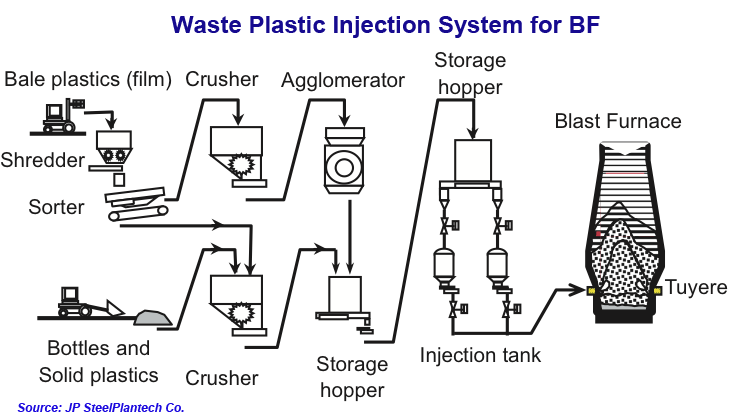Plastic Waste Injection
Plastic waste can also be injected to the BF, thereby reducing the demand for coke. As the plastics also contain hydrogen, they can also provide additional benefits similar to natural gas injection. The theoratical limit for plastics injection is estimated to be 70 kg/t-HM (rates of 67 kg/t-HM have been practiced in Germany). Every ton of plastics used in BF can replace 750 kg of coke. The Cl and PVC content of plastic waste is a concern - particularly given that PVC may give rise to dioxing production and thus necessitate additional flue gas treatment. Therefore, plastic waste need to meet certin composition requirements for its suitability (IPPC, 2009. p.356). The availability and cost effectiveness of waste plastic can limit the applicability of this measure in China and India.
| Development Status | Products |
|---|---|
|
Commercial
|
iron
|
Plastic Waste InjectionCosts & Benefits
| Parent Process: Blast Furnace System | |
|---|---|
| Energy Savings Potential |
The energetic value of the 0.4 Mt plastic used in Japanese steel plants yearly is equal to 20 PJ. (IEA, 2007. p.121) For every ton of plastic waste used, coke use can be reduced by 750 kg. (IPPC, 2009. p.355) |
| CO2 Emission Reduction Potential |
For every ton of plastics used CO2 emissions linked to the production of 750 kg of coke will be avoided. |
| Costs |
The investment for the plastics injection plant in Austria was about €20 million for an injection capacity of up to 220 000 t/y. Additional costs were projected for unit's maintenance (IPPC, 2009. p.356) |
Plastic Waste InjectionSchematic
